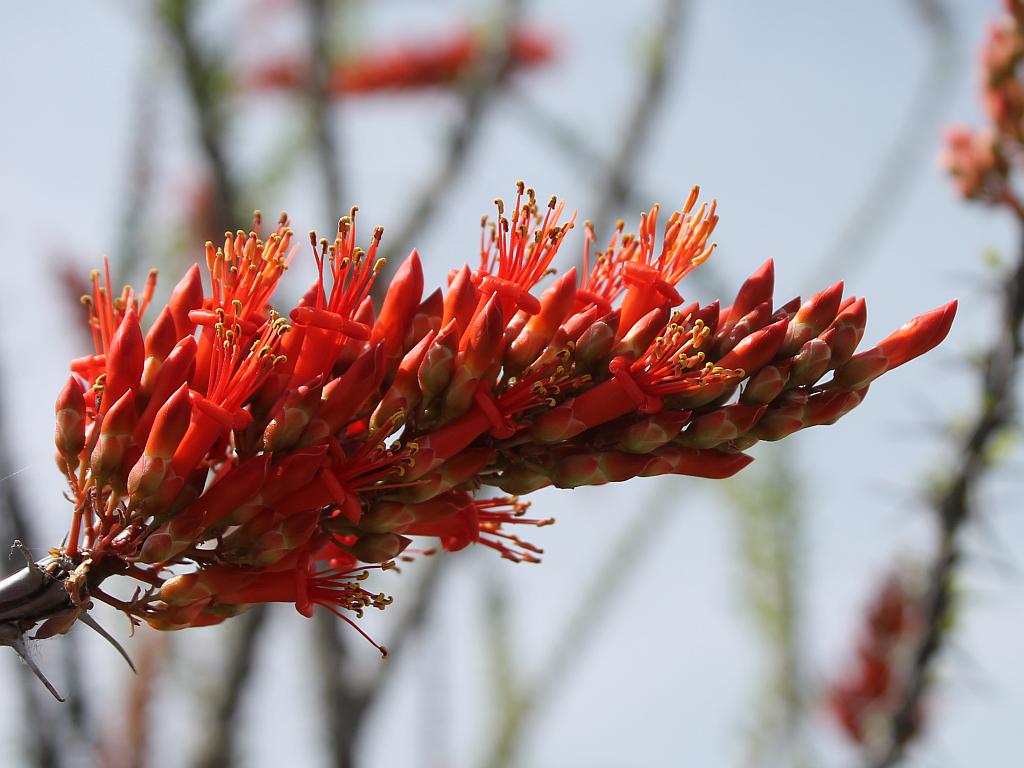I took this photo of an ocotillo flower cluster downtown yesterday just after we had lunch at our favorite Tex-Mex restaurant. This particular cluster was low enough on the ocotillo branches that I could get this nice close-up of it. Click on the image to enlarge.
We have an ocotillo at home that will soon have flowers like this. I will try and publish photos of that one when they are open.
Here are a few factoids about ocotillos from Wikipedia:
Fouquieria splendens (commonly known as ocotillo, but also referred to as coachwhip, candlewood, slimwood, desert coral, Jacob’s Staff, Jacob Cactus, and vine cactus) is a plant indigenous to the Sonoran Desert and Chihuahuan Desert in the Southwestern United States and northern Mexico.
Ocotillo is not a true cactus. For much of the year, the plant appears to be an arrangement of large spiny dead sticks, although closer examination reveals that the stems are partly green. With rainfall the plant quickly becomes lush with small (less than 1 inch) ovate leaves, which may remain for weeks or even months.
Individual stems may reach a diameter of 2 inches at the base, and the plant may grow to a height of 30 feet. The plant branches very heavily at its base, but above that the branches are pole-like and only infrequently divide further, and specimens in cultivation may not exhibit any secondary branches. The leaf stalks harden into blunt spines, and new leaves sprout from the base of the spine.
The bright crimson flowers appear especially after rainfall in spring, summer, and occasionally fall. Flowers are clustered indeterminately at the tips of each mature stem. Individual flowers are mildly zygomorphic and are pollinated by hummingbirds and native carpenter bees.


